I had heard so many good things about Tallinn before travelling there so my expectations were really high. Unfortunately, it didn’t quite live up to them. I think it would have, maybe, 10 years ago. However, now it has become so touristy, it has taken away a lot of the charm and that feeling of time and history. That is not to say that we didn’t enjoy it. It is still a beautiful place and well worth a short trip. And here are the must-do’s of Tallinn
- Walking it’s cobbled streets is, definitely, the highlight of a trip to Tallinn. Tallinn’s Old Town is one of the best preserved medieval cities in Europe. We enjoyed just meandering around it’s ancient streets, with and without a map, as it is rather hard to get lost in it.
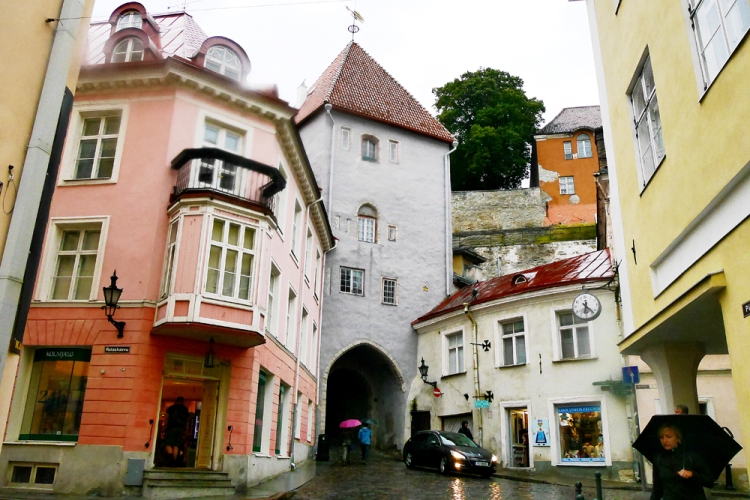
- Walking at least on of Tallin’s Old Town’s walls. Pretty much the whole of the Old Town is surrounded by high walls, making it one of Europe’s best preserved medieval fortifications. There is 1.9 km of the original city wall left standing as well as 20 of it’s defensive towers. It is possible to walk on the walls in several areas. Although it can be quite a hair-raising experience.
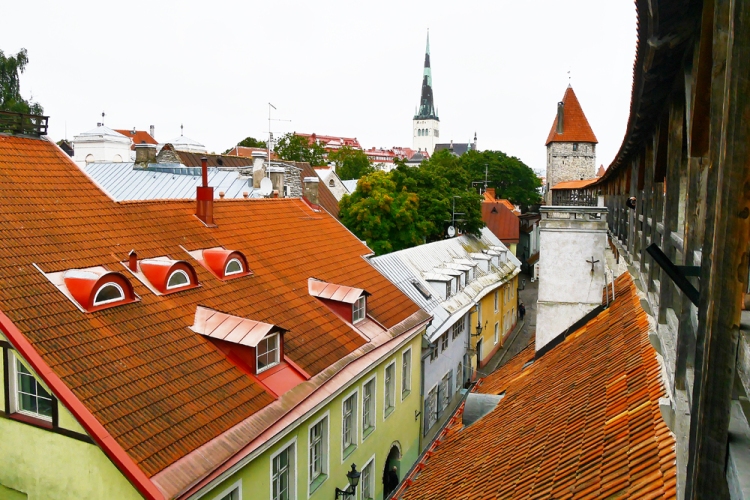
- The most hair-raising experience you can get in Tallinn is, probably, going to the top of St. Olav’s church. The climb up the tower is an experience in itself. 200 very narrow, winding stone step lead up with no hand railing to hold on to and people passing in the other direction, causing you to squeeze to your wall as much as you can, hoping they don’t push you off down the stairs. Once, and if, you do get to the top, going out onto the roof might be even harder. The ‘walkway’ goes around the roof spire that is sloping at around 45 degrees. And the ‘walkway’ itself is only some small pieces of wooden planks. Hmm… I might not suffer from vertigo, however, my brain was just shouting ‘Are you insane?’ as I walked out on it. Luckily, there were only two other people out, as I am not sure I (a slim person) would have been able to pass others. The views, however, were spectacular. Were they worth it? Well, that’s up to each person.
- Tallinn’s viewing platforms. There are several of them and they all offer spectacular vantage points. Patkuli offers fairytale views over Old Town, while Kohtuotsa has stunning views over the Old Town as well as the modern city skyline. My favourite, however, was Piiskopi. This garden-like viewing platform offered great views and great atmosphere.
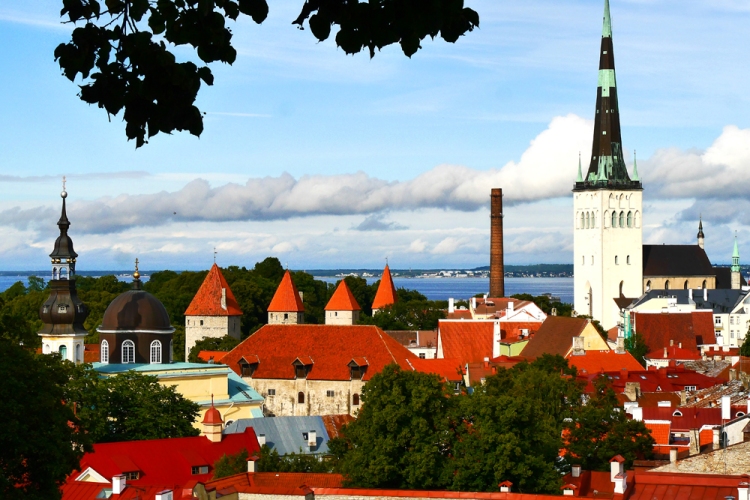
- St. Alexander Nevsky Cathedral. This dome shaped cathedral, built in 1900 is very attractive. But the legends surrounding it are even more so. Built in times when Estonia was part of the tsarist Russian empire the cathedral was originally intended as a symbol of the empire’s dominance – both religious and political – over this increasingly unruly Baltic territory.The Alexander Nevsky Cathedral, with its famous ‘onion domes’, is certainly one of The Old Town’s most famous ‘postcard pictures’. Its association with the Estonian capital is very ironic, however, considering it was built during the reign of Alexander III (1845–1894) and is actually a symbol of the Russian Tsar’s attempt to phase-out Estonian culture through Russification.Estonian folklore states that while the Russians were digging in Toompea to lay the foundations for this iconic cathedral, they stumbled across the tomb of Kalev – a mythological king in ancient Estonia. The workers dug so deep into Toompea Hill that they struck an iron door, upon which was inscribed:
“Dammed be everyone who dares disturbs my peace”
Some of the workers were understandably nervous after reading this and pressure to abandon the build began to mount. These superstitious fears were quickly dashed by those in charge, however, and construction continued regardless of the warning on the side of the tomb. By 1900, the cathedral was built.
Almost immediately the church became plagued with structural deficiencies; huge cracks began to emerge in the walls and a total collapse was feared in the early 20th century. Although the majority of Russians blamed poor workmanship and inefficient planning, some believe that Kalev’s curse still lingers over the Alexander Nevsky Cathedral. Even today, scaffolding is a very common sight on this cursed church.
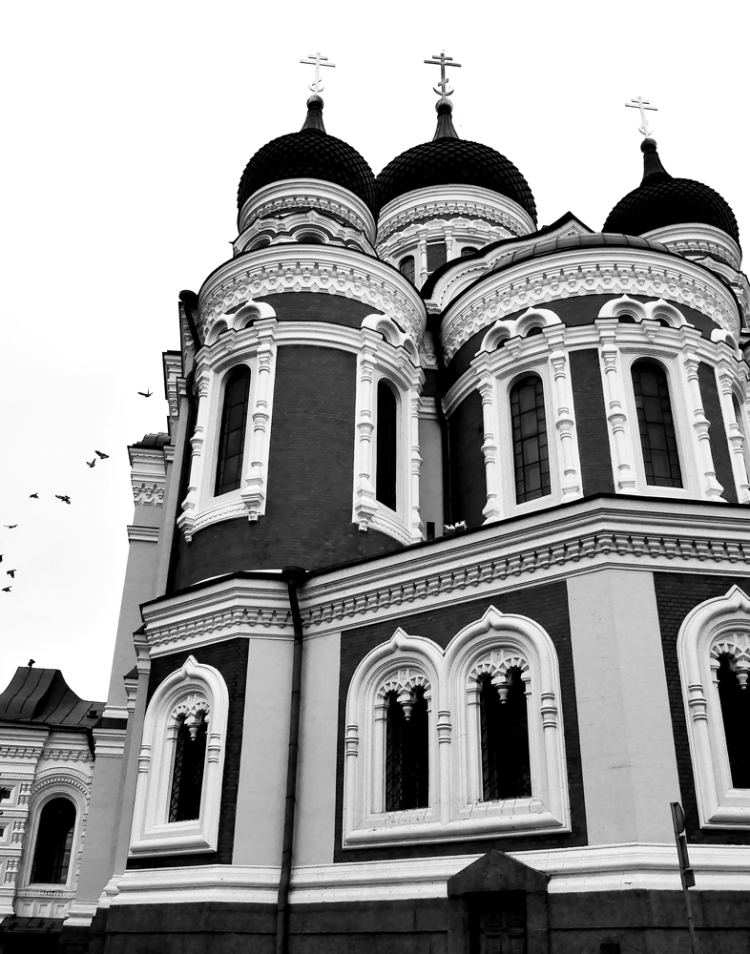
- Town square at night. This square, named for the Town Hall that flanks one of its sides, is very picturesque at any time, but especially during dusk, when the sun has gone down, painting the sky eerily blue, and the artificial lights turned on, painting the square in warm orange tones. It is absolutely lovely.
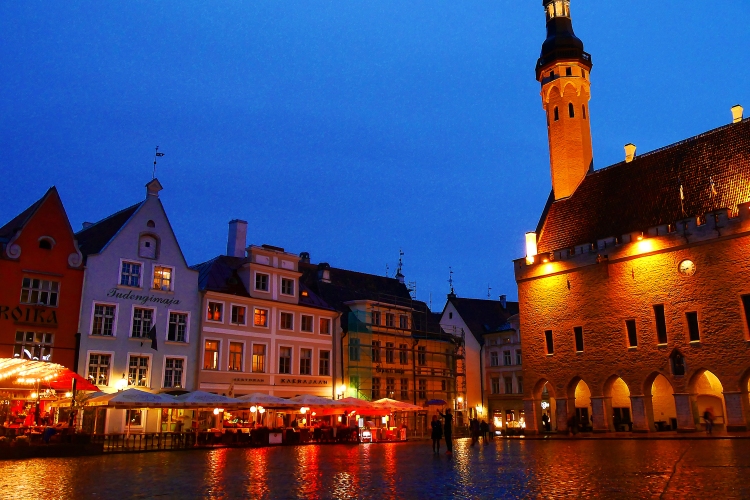
- Linda Hill. At the top of Toompea Street on the upper side of the Old Town sits a tiny monument depicting a mythical figure – Linda. According to Tallinn folklore, Linda was the wife of Kalev, the man who founded the city. The statue depicts a very solemn figure of Linda with her head bowed, mourning the death of her husband.This small monument is very important to the people of Tallinn because, despite the fact that the statue predates World War II, the residents adopted it as an unofficial memorial to loved ones that had been exiled to Siberia. Due to the fact that there was no official gravesite or memorial, locals would come and lay flowers by Linda, sometimes at great personal risk.The inscription under the statue reads: “To remember the ones who were taken away. Their oppression screams towards the sky”.
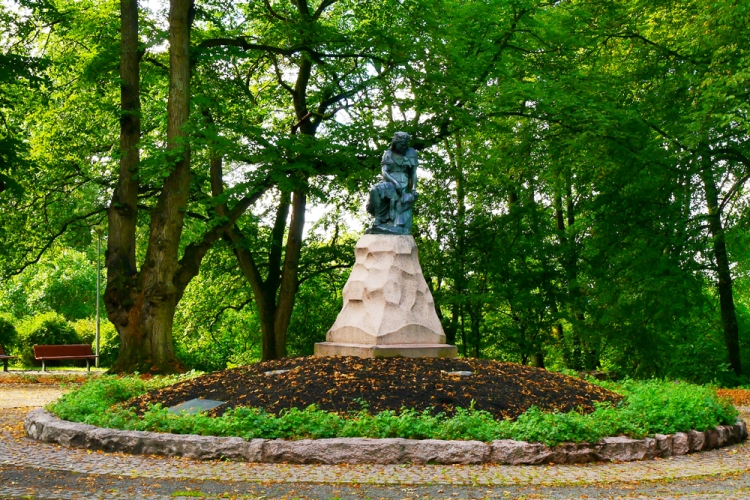
- Freedom Square.This open area at the edge of Old Town is a place of national symbolism and civic pride, as well as a favourite gathering spot. It’s not Tallinn’s most scenic spot but it is historically significant to Estonians.The large pillar with the cross that dominates the west side of this square is one of its new features. This is the Monument to the War of Independence, commemorating Estonia’s hard-fought struggle in 1918 – 1920 to free itself of foreign rule.
To get a glimpse of the square’s older history, all you have to do is look down. A glass panel in the street on the northwest corner of the square reveals the foundation and stairs of the Harju Gate tower, which stood here in medieval times.
- Kiek in de Kok.This massive, 38m-high cannon tower houses an extensive museum of the town’s fortifications, weapons and medieval-era life. It was interesting and engaging for both adults and kids, even our five-year old daughter enjoyed herself and she is not a fan of museums.The tower’s unusual name literally means “Peek into the Kitchen.” The structure was so high that medieval guards joked they could see right down the chimneys and into the kitchens of the houses below.
At the top of the tower, there is a café with some great views of the Old Town. Although when we got there we were hoping for some coffee but there was nobody there. We waited for half an hour sitting at a table, enjoying lovely views and resting our legs and, finally, had to give up on hoping for that coffee cup.
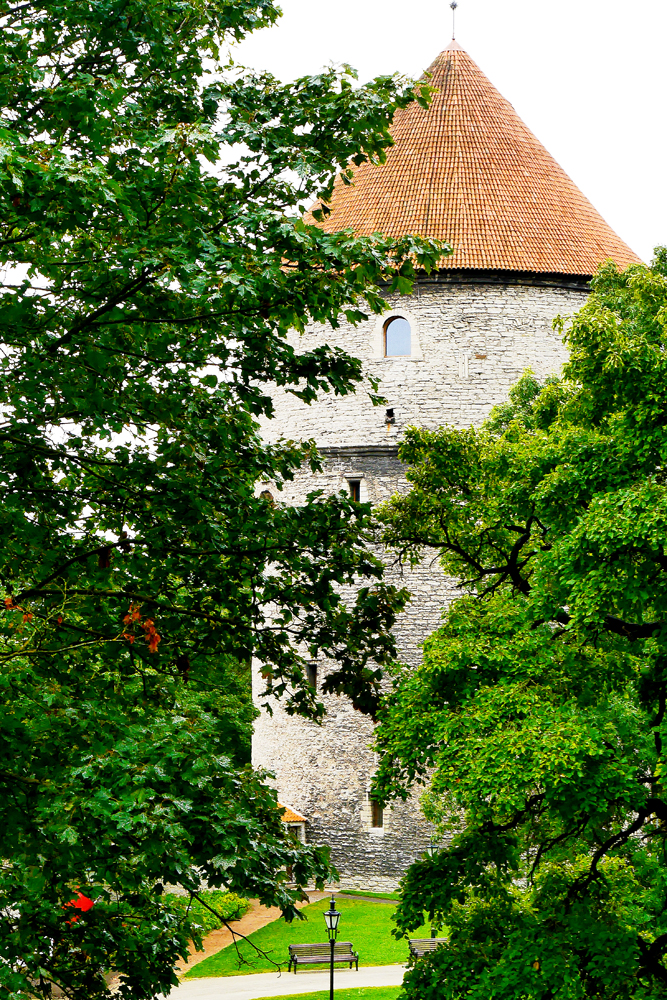
10. Rataskaevu Street 16. One of the windows on this house’s top floor is bricked up from the inside, and has false curtains painted on the inside. This 15th century house happens to be the subject of Tallinn’s most famous ghost legend, a story called “The Devil’s Wedding”. The tale goes like this: Centuries ago, on a cold winter’s night, a bankrupt hotel owner in Rataskaevu Street decided to take his own life. He had grown increasingly destitute with the sheer lack of custom and had nowhere else to turn.Just before the fatal moment, as if by fait, there came a loud knock on the door. A man entered and asked the poor owner if it was possible to rent one of the rooms on the top floor until dawn to have a party. The stranger would pay the landlord handsomely but only on the condition that no-one eavesdropped on the banquet.
Later that evening, coaches began to pull up and guests flooded into the hotel. The celebrations were thunderous; the music, fabulous; the singing and dancing, loud enough to shake the foundations of the building itself. Remembering the words of the stranger he was very reluctant to investigate himself but, eventually, curiosity overruled his apprehensions and he went upstairs and peered through the keyhole, recoiling in shock at what he witnessed.
Legend has it that what the hotel owner saw as he pressed his cheek against the door and squinted through the keyhole was the Devil’s Wedding.
Word that the Devil had appeared in Tallinn spread to the Town Hall and they ordered that the room was to be walled up and the window filled-in so no soul could ever enter again.








Super video! Kaut bijām ar ģimeni Tallinā (nu jau gan vairākus gadus atpakaļ), nezināju, ka ir tādi skatu torņi un laukumi. Nākošreiz būsim gudrāki, jo, kā izskatās, skati no tiem pār pilsētu ir vienreizēji! Paldies, ka padalījāties ar informāciju un iespaidiem!
LikeLike
Jā, tie skati ir tik tiešām skaisti 🙂 Pilnīgi noteikti ieteiktu!
LikeLike